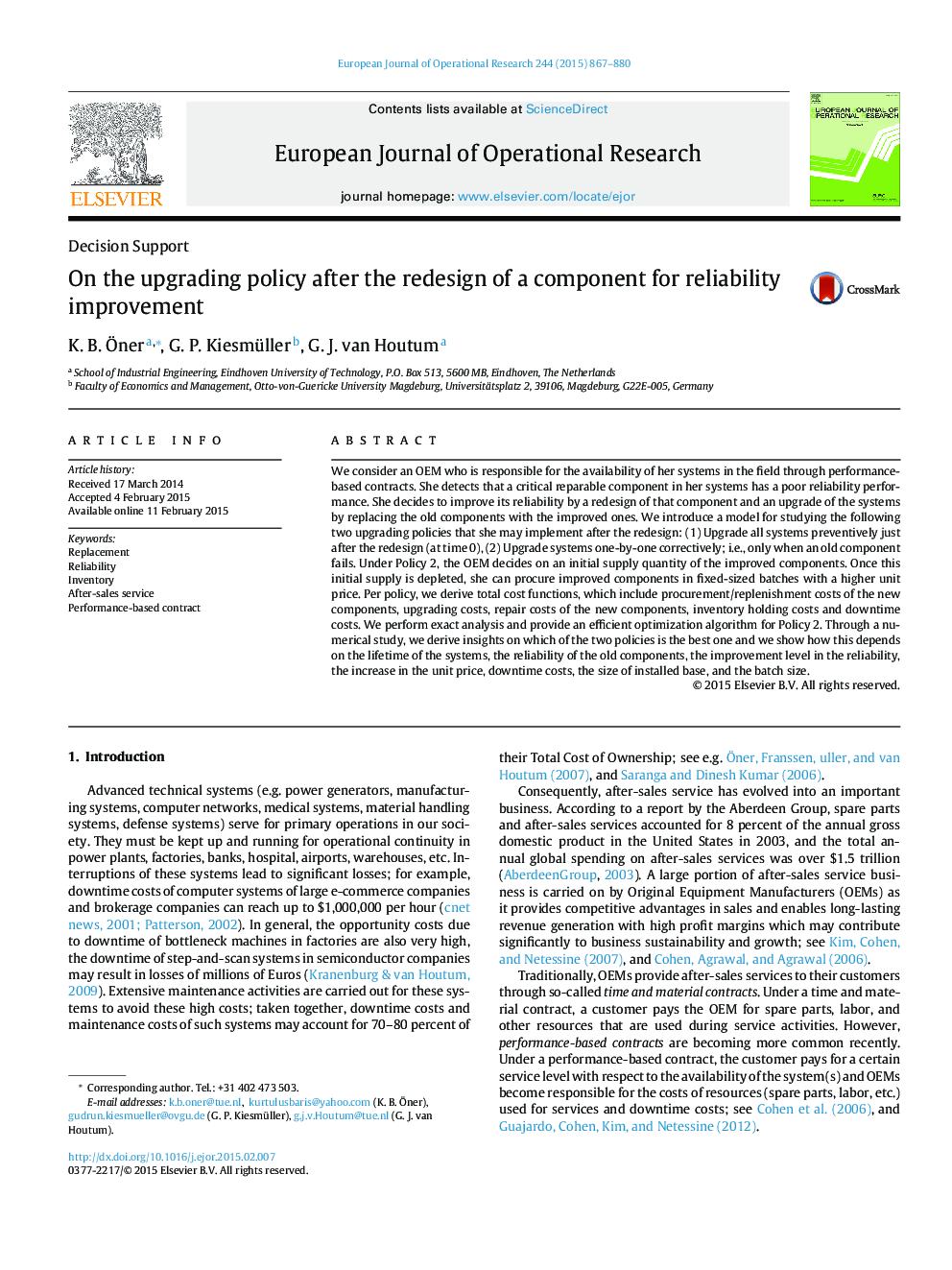| Article ID | Journal | Published Year | Pages | File Type |
|---|---|---|---|---|
| 479586 | European Journal of Operational Research | 2015 | 14 Pages |
•Preventive upgrading and corrective upgrading policies are modeled.•Convexity-like properties which are utilized for optimization are derived.•Best policy depends on improvement in reliability and downtime costs, among others.•An extension of our original model for positive replenishment lead times is provided.
We consider an OEM who is responsible for the availability of her systems in the field through performance-based contracts. She detects that a critical reparable component in her systems has a poor reliability performance. She decides to improve its reliability by a redesign of that component and an upgrade of the systems by replacing the old components with the improved ones. We introduce a model for studying the following two upgrading policies that she may implement after the redesign: (1) Upgrade all systems preventively just after the redesign (at time 0), (2) Upgrade systems one-by-one correctively; i.e., only when an old component fails. Under Policy 2, the OEM decides on an initial supply quantity of the improved components. Once this initial supply is depleted, she can procure improved components in fixed-sized batches with a higher unit price. Per policy, we derive total cost functions, which include procurement/replenishment costs of the new components, upgrading costs, repair costs of the new components, inventory holding costs and downtime costs. We perform exact analysis and provide an efficient optimization algorithm for Policy 2. Through a numerical study, we derive insights on which of the two policies is the best one and we show how this depends on the lifetime of the systems, the reliability of the old components, the improvement level in the reliability, the increase in the unit price, downtime costs, the size of installed base, and the batch size.
